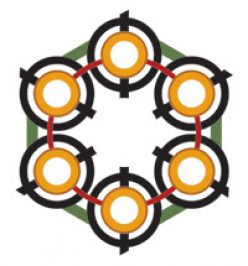The Dutch drug testing program does not allow for mailed-in samples (folks have to bring them in person) and they never publish individual results publicly, nor do they publish summaries contemporaneously. Only warnings about “dangerous drugs” are published soon after a sample’s analysis. Despite these limitations, the Nederlands Ministry of Health’s Drug Information and Monitoring System (DIMS) is one of the best testing projects in the world.
The DIMS Annual Report for 2015 says the project analyzed nearly 12,000 samples in 2015 alone.
Their program works by individuals bringing samples in to one of the approved locations, in person. In some cases (like with pharmaceutical tablets) the drug identification is provided immediately. In other cases (they do not specify frequency) they send the sample in to a lab and the individual who brought in the sample is given a unique code, which they can use to call back in a week and get the analysis result.
They had an amazing 28 physical locations in 2015 in a country the size of Ohio. Free testing, in every major city and some minor ones. NOt more than an hour’s transit away. There’s nothing else like it.
Some highlights (thanks roi):
- 57% of the ecstasy pills they tested contained over 140 mg MDMA
- The highest dose in an ecstasy tablet was 293 mg MDMA
- Average cocaine purity was 64%
- Average amphetamine purity was 46%
- 4-FA (4-fluoroamphetamine) was the most tested “research chemical”
- LSD blotter contained an average of 74 ug LSD
- 27% of samples sold as “LSD” didn’t contain LSD
- 11% of ketamine samples contained MXE or deschloroketamine
- Average MDMA dose in tablets has greatly increased over the last 10 years
- Amphetamine and cocaine purity slightly increased over the last 10 years
- 2C-B tablets on average contain 11 mg 2C-B
Check out the PDF of the report:
Drugs Information and Monitoring System (DIMS) 2015 Annual Report [Cache]
